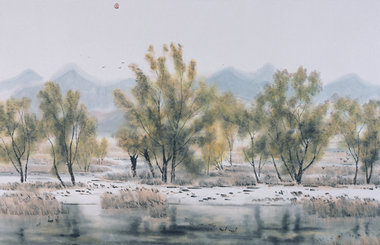Back to the beach
By Nan-Hie In in Koh Samui, Thailand ( China Daily ) Updated: 2014-12-27 07:51:46Local charms
Back on shore, the island's numerous local charms beckon. Few are as haunting as a visit to Wat Khunaram in the south of Lamai beach, a Buddhist shrine dedicated to Phra Khru Samathakittikhun (also known as Loung Por Daeng or Luang Pho Daeng), a Thai Buddhist monk who died while meditating in the 1970s.
His remains housed in a glass casket at this mausoleum-turned-shrine show that mummification was practiced by the local Buddhist community.
To many it is a grotesque sight, including the leathery skin and the dark sunglasses that shield his decomposed eyes. But the curious still visit to observe the corpse, and the mystery that perplexes many onlookers is how it has not decomposed significantly, four decades since the monk's death.
The story is legendary on the island. The Koh Samui native died in 1973. Allegedly he foresaw his end, so around a week prior, he ate little while devoting himself to meditation.
The abbot requested his preserved body be showcased in the shrine "as a symbol to inspire the future generations to follow Buddhist teachings and (to) be saved from suffering", reads a plaque at the venue.
The tourist hordes are gone nowadays and most visitors are locals who come to pay their respects.
For a less macabre sample of local culture, visitors can savor the innumerable culinary delights in Koh Samui. Foods distinct to the area include kalamae, Koh Samui's traditional rice and coconut-based candy in mini-pyramid-sized bites.
Kalamae Mae Thunya, a 10-year-old family-run shop, prepares the treats in the most traditional way, as seen inside its kalamae-making facility.
The process begins with large stirring machines where rice is cooked and blended with palm sugar and coconut milk for 15 hours. The sweet, texture-packed morsels - available in flavors like palm sugar and black rice - underscore the culinary ingenuity of this cuisine.
|
|
|
|
|
|
|
|

























 Raymond Zhou:
Raymond Zhou: Pauline D Loh:
Pauline D Loh: Hot Pot
Hot Pot Eco China
Eco China China Dream
China Dream China Face
China Face






